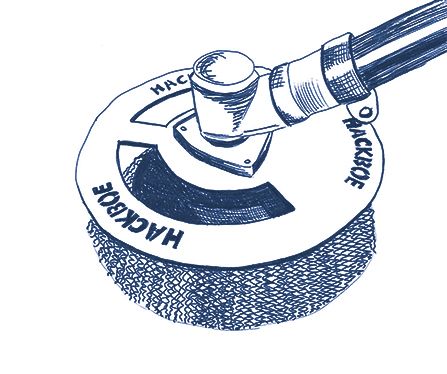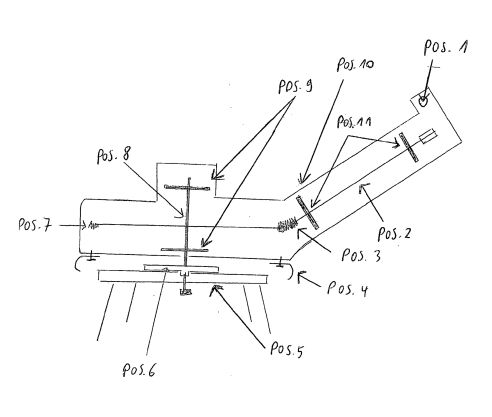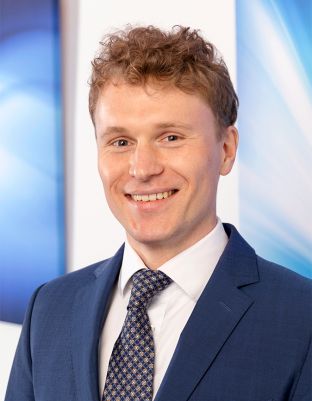
In season 10, episode 6, of the TV show "Die Höhle der Löwen" (German version of the US show Shark Tank and the UK show Dragon's Den), a company from Coesfeld presents a power hoe similar to a string trimmer called "Hackboe". The special feature of the Hackboe is a reduction gearbox that can reduce the speed from about 7500 rpm to about 500 rpm. This allows the use of many different attachments that would otherwise not be allowed to be mounted for legal reasons. The Hackboe offers the further advantage that a user can stand upright, which is easy on the back.
The inventor himself wrote and filed a utility model for the Hackboe. This example is intended to show why the support of a patent attorney is indispensable for such activity in order to improve the chances of success for a sufficient protection.
Drafting a patent/utility model application
An individual inventor or a company is not legally obliged to appoint a patent attorney to draft a patent/utility model application but may prepare it themselves and file it with the German Patent and Trademark Office (GPTO).
Info: The German Patent and Trademark Office (GPTO) offers tips for patent and utility model applications on its homepage, which are intended to teach a layperson how to write such an application.
This might give the impression that these tips would be sufficient to prepare and file a promising patent/utility model application. But just as little as a layman can make a diagnosis or even perform surgery after reading an online health portal, is he then in a position to successfully describe his technical innovation "patent-wise" or to formulate suitable claims that result in a broad scope of protection.
The utility model (DE 20 2013 004 017 U1)
Apparently, the inventor of the Hackboe has used this information to try to work out a utility model to protect the idea of the Hackboe. The utility model contains only one page with description and a single claim for protection, as well as a figure depicted hereafter.

Claim – analysis
The claim of a utility model defines its scope of protection. The claim defined in the utility model reads unusual in the eyes of a patent expert and contains numerous deficiencies, which are briefly explained below.
Multi-sentence claim
The claim is divided into several sentences.
Info: Although it is not prescribed by law that single-sentence claims must be used in patent and utility model applications, such multi-sentence claims are regularly objected to as being unclear during an examination of the same by the patent office.
Features' list
The claim of the utility model can be divided into the following features:
M1) The attachment part for string trimmers is an independent housing (Pos. 10) in connection with a chopping disc (Pos. 5) and a protective ring (Pos. 4),
M2) characterized in that it is pushed onto the tree of the string trimmer from below and is fastened with the clamping screw (Pos. 1).
M3) In the housing (Pos. 10), there are two differently sized gearwheels (Pos. 3 and 7), each on a drive shaft (Pos. 2 and 8), which are mounted on ball bearings (Pos. 9 and 11),
M4) characterized in that the strong speed reduction for soil cultivation is thus ensured.
M5) The chipping disk (Pos. 5) is simply put on the holder (Pos. 6),
M6) characterized in that it is fastened with a left-turning screw.
Lack of clarity and consistency of the features
M1 describes an add-on part that is an independent housing. It is unclear whether the add-on part is enclosed or whether the add-on part itself forms the enclosure. Furthermore, the protective ring is a superfluous feature, because it has no decisive technical function, but it limits the scope of protection and thus makes it easy for third parties to circumvent the scope of protection of the utility model.
Note: Ambiguities in the claim can lead to features being disregarded in an assessment for novelty or inventive step, or being interpreted in the broadest sense, thus jeopardizing the legal validity of the utility model. On the other hand, ambiguities may unnecessarily limit the scope of protection, which could lead to reduced chances of success in infringement proceedings.
M2 describes the features in terms of a process (cf. "is pushed onto" and "is fastened") and not in terms of a device, and further elements not associated with the attachment part. The relative term "bottom" is also vague, since when the attachment part is turned, it is pushed on from above.
M3 describes that there are gearwheels on respective drive shafts in the housing. It is unclear whether the gearwheels are part of the attachment part or part of the housing itself, and whether the gearwheels interact with the drive shafts or whether the gearwheels or the drive shafts have ball bearings.
M4 defines the invention by the result to be achieved and not by the technical means that bring about this result. The term "strong" is generally considered to be unclear. It is not clear from the utility model at what speed range this is to be classified as strong.
M5 is again described as a process (see "is [...] put on"). Here, it is also unclear which holder is meant, due to missing antecedent basis.
M6 is once again described as a process (see "is fastened"). In addition, the restriction to a "left-turning" screw is superfluous and unnecessarily restricts the scope of protection.
The consequences of such defects should not be underestimated by the inventor. They cannot be easily remedied later and, if remedied, are usually accompanied by severe restrictions on property rights. It is precisely these negligences that can fall on the inventor's feet, for example in a funding round, if potential investors are convinced of the product per se or competitors are to be kept off the market, but after a brief analysis it becomes apparent that there is no sufficient protection for the product and that it is also – due to the publication of the utility model – only difficult to achieve in the original sense (keyword: pre-publication).
Claim without defects
A claim without defects could be as follows:
1. Attachment device for sliding on and interacting with a tree of a string trimmer, the attachment device having a receiving portion (Pos. 6) for a chopping disc (Pos. 5), the attachment device having a drive-side gearwheel (Pos. 3) and a driven-side gearwheel (Pos. 7), and the drive-side and driven-side gearwheels being in operational relationship with each another and being adapted to set a predetermined transmission from a motor drive to the chopping disc.
Note that the claim suggested above is just one of many ways a claim could be drafted more promisingly.
Further specifications, for example with regard to the input shaft, the output shaft, their alignment to each other, as well as the bearing and attachment or arrangement of the elements to each other or the definition of the guard ring could be defined in dependent claims. For the attachment device, for example, the description could be used to creatively describe further definitions and explanations.
For a possible legal dispute, appropriate fallback positions can thus be integrated in the application documents in advance.
The basis for a suitably formulated claim is always a detailed consultation between the inventor and a patent attorney. This applies all the more since it is not readily possible to subsequently amend the patent/utility model application. In particular, after the application has been filed, all amendments which the person skilled in the art cannot derive from the documents originally filed are excluded.
Inadequately formulated IP applications therefore bear the risk of not being legally valid and/or unnecessarily limiting the scope of protection.
Conclusion
It becomes apparent that a patent/utility model application cannot simply be formulated without appropriate technical training and sufficient experience in utility model and patent law. Rather, a patent attorney is needed who, in detailed discourse with the inventor, determines the core of the underlying technical idea and accordingly formulates the broadest possible scope by abstracting the prototype. Even though the underlying idea behind the Hackboe may be a clever invention, it has again been shown that the successful protection of a technical idea by a utility model or a patent usually requires legal advice from a patent attorney (true to the motto "good advice is expensive, bad advice is even more").
Author: Julian Graf
German and European Patent Attorney
Disclaimer: The above contribution reflects the personal opinion of the author. The assessments and statements made in the article do not constitute legal advice and are provided under exclusion of any liability. If you need an assessment of an individual case, please contact the author and/or the law firm KUHNEN & WACKER.


